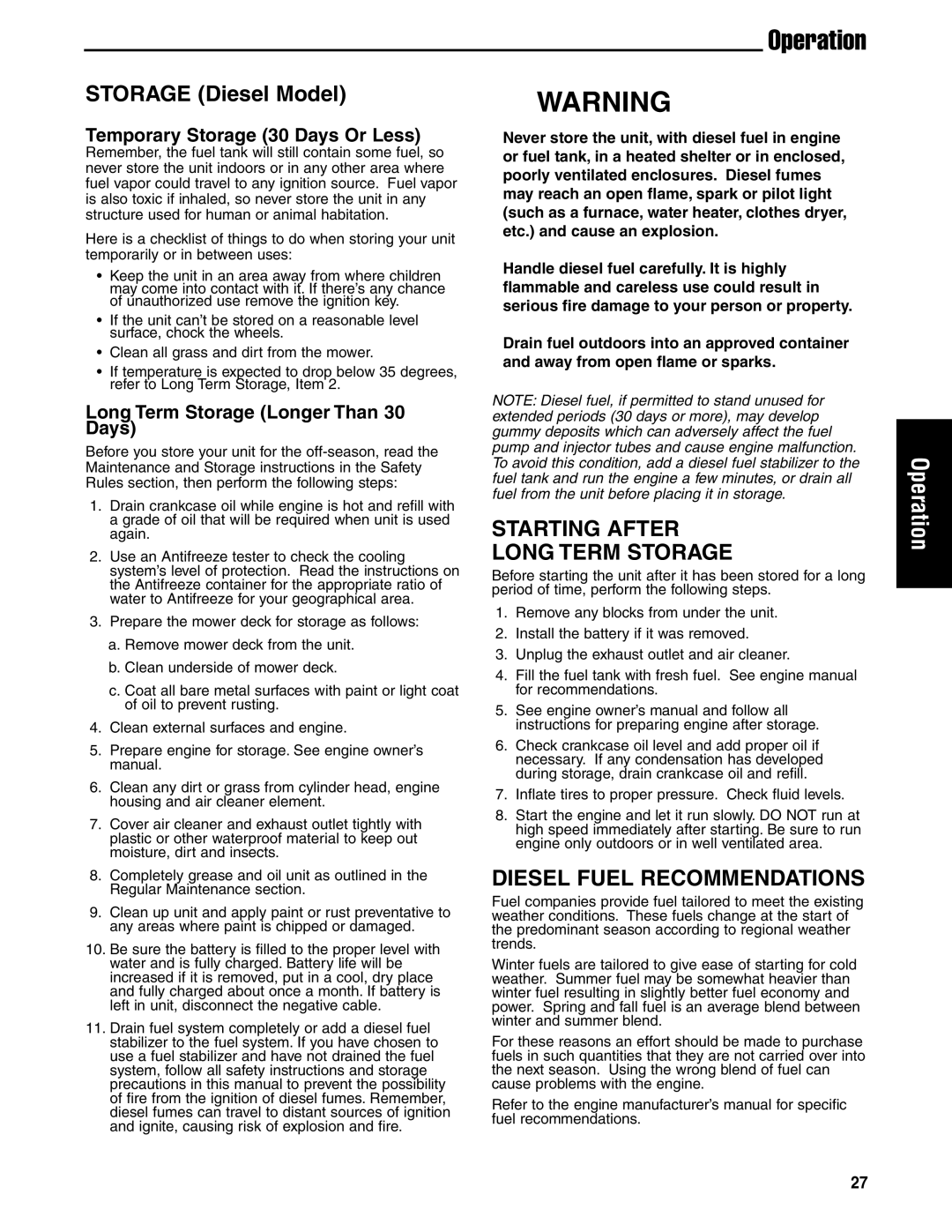5900621, 5900626, 5901179, 5901178, 5901181 specifications
Ferris Industries, renowned for its innovative approach to outdoor power equipment, has introduced a range of products identified by the model numbers 5900626, 5901179, 5901180, 5901178, and 5900621. These models exemplify the company's commitment to quality and efficiency, catering to both residential and commercial lawn care needs.The Ferris Industries 5900626 is a stand-out model in the lineup, designed for superior performance and durability. It features a robust engine that ensures reliable operation under various conditions. Equipped with a cutting-edge suspension system, it provides enhanced comfort and stability, allowing users to navigate uneven terrain effortlessly. This model is specifically tailored for those seeking efficiency without compromising on power, making it ideal for medium to large lawns.
Next in the lineup is the 5901179, which is favored for its compact design and versatility. This model is equipped with advanced cutting technology that delivers a clean, precise cut, ensuring a manicured appearance. Its small footprint allows for easy maneuverability in tight spaces, a vital feature for residential landscapers. Moreover, the ergonomic controls enhance the user experience, reducing fatigue during extended use.
The 5901180 model showcases Ferris Industries’ dedication to technological advancement. Featuring an innovative hydrostatic drive system, it provides smooth acceleration and deceleration, allowing for greater control over speed and direction. This model is engineered for those who demand high levels of maneuverability and responsiveness, making it an excellent choice for complex landscaping tasks.
For users prioritizing reliability, the 5901178 model stands out with its heavy-duty construction. Designed to withstand rigorous use, this model can handle challenging landscapes while maintaining performance. The inclusion of maintenance-free components reduces downtime, ensuring that users can focus on their landscaping projects without interruption.
Lastly, the 5900621 model serves as an efficient piece of equipment for commercial users. It combines powerful performance with fuel efficiency, ensuring that operators can complete larger jobs without frequent refueling. The advanced cutting deck technology ensures even grass trimming, enhancing overall lawn aesthetics.
In conclusion, Ferris Industries continues to impress with models 5900626, 5901179, 5901180, 5901178, and 5900621. Each model incorporates features tailored for specific needs, from exceptional cutting performance to unparalleled durability, ensuring that users can achieve optimal results in their lawn care endeavors.

